Hello,
I wanted to discuss the different types of hardiness zones for planting flowers and vegetables outside within the U.S. We will discuss the different hardiness zones, the difference between annual and perennial plants, and when planting can begin in the spring.
Planting Zones in the US
The climate is different all over the United States, so every flower or vegetable will not grow in every state. There are 10 different zones within the United States. When selecting plants, annuals or perennials, you need to make sure the plant can thrive in your climate zone. The difference between an annual and perennial plant is their life cycle. The annuals complete their life cycle in one season, which is typically spring to fall. Perennial plants tend to come back every year. So checking the gardening zone map is essential to making sure you purchase plants or seed that can thrive in your growing zone. The hardiness zone map is based on average annual minimum winter temperatures. The map is divided into thirteen distinct 10ºF zones, which are further divided into sub-zones of 5°F. Here is a picture of the gardening zone map for the United States.
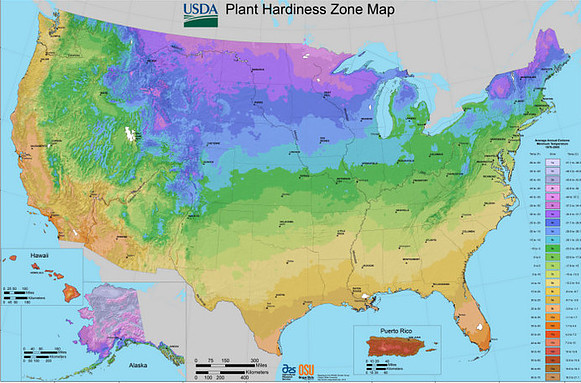
Here is a closer look at the Average Annual Extreme Minimum Temperature from 1976-2005 that I found to clearly show the gardening zone map temperatures.
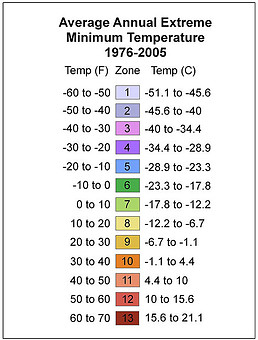
Planting Zones in Michigan
I live in Michigan so I wanted to concentrate a little on my state. We have technically four zones in our state; zone 3, zone 4, zone 5 and zone 6. I am in zone 5 for our growing season. I am located in Arenac county, the sunrise side of the state, on 20 acres. I really like to grow fruit trees, different types of bushes, perennials and annuals. When I go to purchase seed or live plants I have to consider the zone I am in. I am in gardening zone 5. We have several fruit trees on our property. We have several apple trees, and pear trees, I also have a sour cherry, plum and peach tree we planted last spring. I am also trying to load my flower gardens with perennials, so I don’t have to do as much planting the following year. I have started my list for my vegetable garden for this coming spring. I am also converting an overgrown weed/flower garden into a cottage garden. I have been reading about those. The more plants you fill in with the fewer weeds you have to deal with.
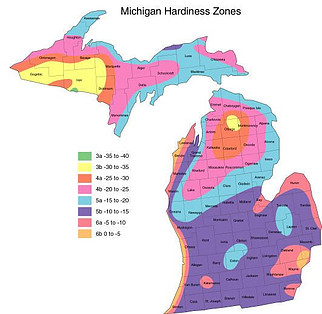
My growing season is gardening zone 5, which is end of May to October, depending on if we have an extended summer or not. If we have a warm October it could last until Halloween but usually done before then.
Planting Zones Southeastern US
I know quite a few people who live in the southeastern US, including my daughter who is in the northern Alabama area. They definitely have a warmer and longer growing season. Her zone appears to be growing zone 7. Growing vegetables and plants in this zone have different and unique plants that can be grown here versus the northern climate. For most of the Southeastern area their growing season is March to December, depending on where you live. Southern Florida their growing season is all year and other parts of the area start early February.
Texas matches the growing seasons of the Southeastern region. Texas growing zones are 7 through 10.
.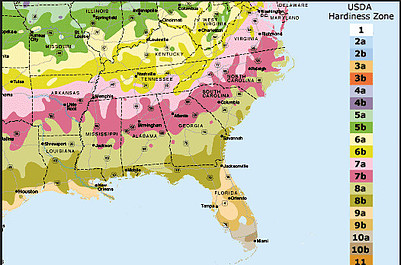
Some plants I like are the Southern Magnolia, they are so beautiful and lush. Other plants like Pink Muhly Grass, Oak leaf hydrangea and Carolina Jessamine. The picture below is a Southern Magnolia blossom. They are a beautiful tree. I wish I could grow them in Michigan. I considered doing a container grow in the house during the winter. I will still need to think about that.
.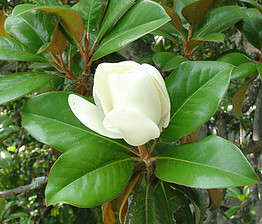
Planting Zones Southwestern US
We have another unique growing zone, in the southwest US. It’s a little dryer in this desert area with a whole new host of plants to grow that are different from any other zone. This area has some of the coldest zones to some of the warmest. It touches all the zone on the legion. Places like Southern California, Arizona and New Mexico are able to grow cacti. It grows wild there. When I worked as a consultant in Albuquerque, NM for a 1 1/2 years I saw tumbleweed like in the cartoons.
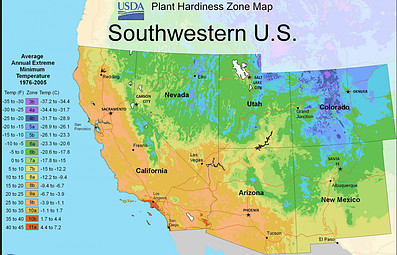
I found a picture of some bunny ears’ cactus that goes in zone 8 thru 10. I thought they were so cool looking, especially with the yellow blossoms,
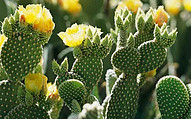
Planting Zones for Alaska and Hawaii
These 2 places are extreme oppose for growing zones.
The state of Alaska
I found this plant hardiness zone map and Alaska has zone 1 thru 8. It would be a little more difficult to grown in Alaska. As it is the coldest state in the nation. Some parts of Alaska have very long and harsh winters with a very short summer window. Despite the cold there are a few plants that do very well in Alaska; forget-me-nots, Salmonberry, Monkshood and fireweek. A few vegetables would be; turnips, chard, beets, cabbage and dill. Anyone here from Alaska? Would love to hear about your growing season.
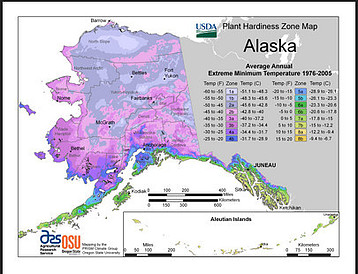
The state of Hawaii.
Hawaii is the home of the exotic fruits and vegetables. Where the orchids and pineapple grow! I would have to say the growing season here never ends. Hawaii has growing zones from 9 to 13. They grow macadamia nuts, mango, banana’s and strawberry guava. Mango’s is a common dooryard tree. Does anyone live in Hawaii? I would love to hear if you have a garden and what is planted in it.
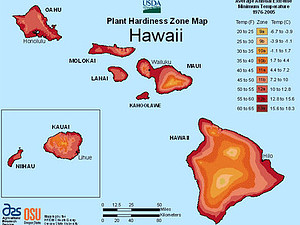
Happy Planting!
As you can see, you need to find out where you live on the gardening zone map to know which zone you live in to purchase the plants that will thrive in your area. What zone are you from? Anyone from outside the USA? If so, I would like to check out your growing zone and if you have a garden plan for the spring.
Interested in extending your grow season? Thinking about a greenhouse or cold frame? Check out my Review – Backyard Greenhouse Kits.
I hope you found this helpful!
Cheers!
Chris

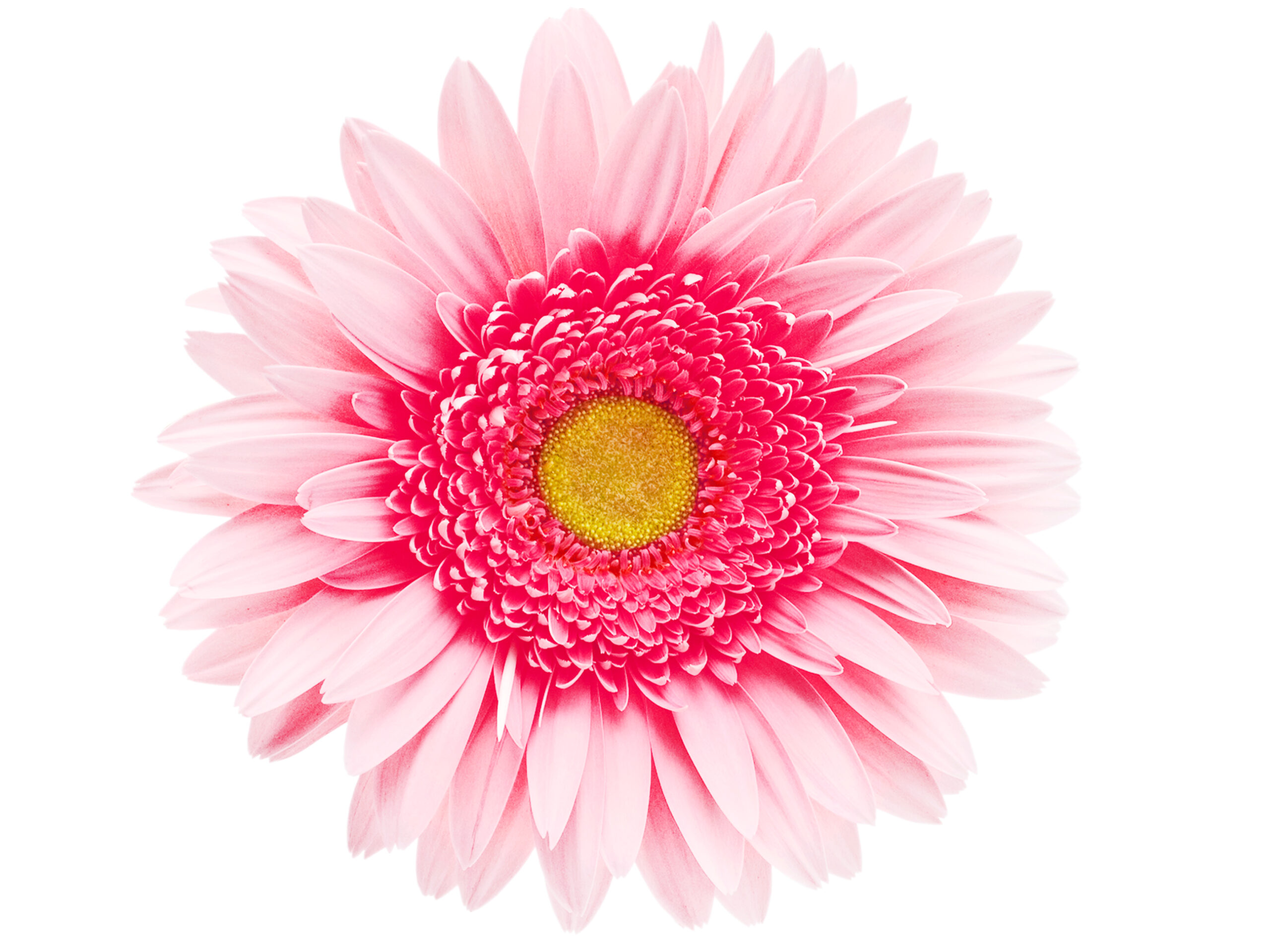

I’m from the south eastern part of the United States, I live in the state of South Carolina where it’s very humid in the summer months. This guide is very helpful you have provided lots of great information on what zones are best to plant in and I think this will save people lots of time and help out tremendously i definitely see the value in information like this especially for beginners. I really enjoyed reading this I see you our lots of hard work into this keep up the good work.
Jonathon
I am in northern mid Michigan and we are frozen right now. Knowing the hardiness zone is important to the plants survival and when its best to plant.
This seems so obvious I don’t know why we didn’t look this up before. We live right in the middle of zone 7, about 15 miles north of New York City. We’ve had an enclosed vegetable garden for a few years now. We had great success the first year and OK success the second year but last year was a bit of a flop. We do have a few challenges to deal with. The first being critters. We do have the small garden fenced in but somehow the squirrels always seem to get in bu at least the fencing keeps the groundhogs, possums, skunk, and raccoon out not the deer though. The other challenge we experience every year is the variability of rainfall in the summer. This is less of a problem when we are at home, but we have had some serious losses when we have been traveling for a few weeks that then coincided with drought.
I do have a question though. These growing zones are only determined by the annual average minimum temperature. We have seen some significant changes to what plants and particularly grasses thrive and don’t thrive over the 15 years that we have been here. Everyone we speak to about this says that it is a consequence of climate change. Do you see that the US planting zone map is going to be altered as a result of climate change?
Regarding the last part of your question. I looked up changes of the hardiness zone from the past 10 years and the prediction of the hardiness zones warming up significantly in the next 30 years Some places are showing hotter in their visual for the next 30 years and some places will have no change. I think there could be some alterations in the future.
Chris, It’s a joy to read through a post in February with such beautiful maps and colors. I live in St. Louis and right now we are socked in with snow and ice. I’ve lived in several planting zones across this country during my lifetime. Grew up in Florida. Later I moved from Florida to Colorado then to Missouri . It was interesting to see the different flowers, trees and vegetables that we could grow everywhere we lived.
My Dad grew up in Kansas and his whole family farmed. When he moved to Colorado he wanted to grow fruit trees. He ordered the proper trees for the planting zone in Colorado Springs. He had gorgeous trees. He actually had apple trees that had several different types of apples growing on the same tree. I have forgotten the proper term but it involved splicing a stem from one tree to another. He enjoyed growing his trees and he and mother had a great time canning their apples and apple sauce each year. I no longer grow anything except two Christmas Cacti. They bloom every year but not at Christmas .Time. They bloom more likely around Thanksgiving but they are still beautiful.
Barbara
Thank you for the kind words about my website. I am in Michigan and we are in a frozen tundra. We have planted a apple orchard as well. My next post is going to be about growing the best apple tree. I think the term you are looking for is grafting. That would make another great post on how to graft!
I’m in growing zone 7a. I live near Washington, D.C. I would like to grow cold weather crops sometimes, but it seems like we go from really cold to really warm very quickly. We have unpredictable winters that can dump a lot of snow on us or barely touch us. Do you have any tips for growing cold-weather crops like lettuces and spinach?
Yes, either start them indoors or if outdoors, have a cover over them for a greenhouse affect, I think planting outside would work for you to plant next month but have a small greenhouse or plastic tent cover over them and they will do fine. They actually like the cold weather. Carrots get sweeter with the cold ground.
I am living in the Uk and where I am is experiencing a USDA gardening zone 9. However, we can be as chilly as zone 8 or mild as zone 10, depending on the season.
We have a frost-free growing season that usually runs from March to April. This is where we are able to plant vegetable plants such as onions, artichokes and asparagus, and fruits lie strawberries and cranberries,
Your article is very informative and you clearly enjoys being a gardener as this is clearly seen in reading your article
Nice! it sounds like you do some gardening already. Yes I love gardening, even more within the last couple years. Come back for more gardening tips
That’s interest concerning the types of plants and their perfered climates. From the areas that are mentioned, which regions or area do you think has the least limitations or can grow the biggest variety of things ? I can definantly see how certain plants like fruits or vegetables prefer certain climates and temperatures. I’m in the southeast U.S region, and we normally have a vegetable garden every spring through fall.
Hi Justin,
I think zones 9 thru 10 have the biggest advantage. Zone 10 can grow vegetables all year around and Zone 9 can usually plant in February or March depending on the weather. My daughter lives in northern Alabama and got 6 inches of snow and she is zone 7. Thank you for your comment and stop back again
I am living in the Uk and where I am is experiencing a USDA gardening zone 9. However, we can be as chilly as zone 8 or mild as zone 10, depending on the season. We have a frost-free growing season that usually runs from March to April. This is where we are able to plant vegetable plants such as onions, artichokes and asparagus, and fruits lie strawberries and cranberries, Your article is very informative and you clearly enjoys being a gardener as this is clearly seen in reading your article
Hi Moni,
I am a little jealous of your gardening zone. You should be able to plant in March, just watch your weather. If calling for frost just cover them up for the night like a greenhouse effect. This will help protect them if you get them in the ground and the frost isn’t quite done. I am in zone 5a and under 4 feet of snow. It doesn’t look like spring is coming anytime soon
I am also gardening in zone 5 in Michigan, but over on the west side of the state. We started some seeds indoors a couple weeks ago to try to extend our growing season a little, since we won’t plant outdoors until May. I like your idea of a backyard greenhouse though! Something to think about for the future.
Hi Leah,
I am on the east side of the state. zone 5a. I have started some perennial flower seeds and plan on starting vegetable seeds soon, indoors so they are nice size for the end of May to plant in the garden. Thank you for your comments
I have to admit, it took me some time to truly understand that not all weather seasons are suitable for gardening. I learned it the hard way but I learned. I really admire your love for what you do and how you manage to create such content that is not only helpful but also adds more knowledge to what we already know. I just learned about the types of zones – to which I had no idea it worked that way!
Hi Stephanie,
Yes growing in your zone helps your plants thrive. For plants that need a warmer climate could be a perennial for some area but an annual for areas like where I live, unless you bring it indoors. Thank you for your comments